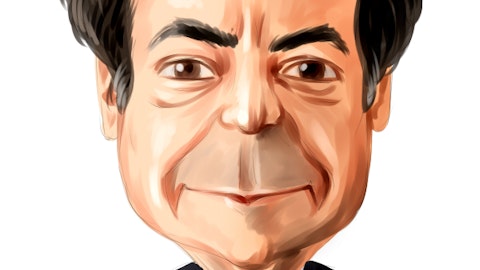Dan Loeb’s Third Point sold its Apple holdings at an unfortunate time – the second quarter of 2011 when the shares were hovering below $350. Dan Loeb decided to buy back those shares by paying at least a $100 premium. Third Point’s 2012 first quarter investor letter explains why Dan Loeb bought Apple back:

Following Apple’s December quarter earnings, we re‐established a position in the stock at $445 per share, a level 10% up from the pre‐earnings price. While the market reacted positively to the strong results, we believed it was still not discounting adequately the strong likelihood that Apple would return capital in 2012. The prospect of capital return stood to broaden the investor base enabling the market capitalization to re‐base around an attractive dividend profile, particularly relative to the Company’s growth rate. Beyond the capital return catalyst, we were focused on Apple’s entry into the 4G device space in 2012, led by the latest iPad and the pending iPhone 5.
As we evaluated Apple at $445 per share, some back‐of‐the‐envelope math painted an intriguing picture. Due to its favorable working capital cycle and deferred revenue contribution, Apple has been churning out cash flow at close to 120% of earnings (actually 128% in FY2012). Looking forward to CY2012, that rate suggests cash flow in excess of $50 per share in 2012. Ignoring repatriation tax for a moment, at $445 per share less $104 per share in net cash, we were creating Apple at 6‐7x CY2012 free cash flow. Looking toward year‐end 2012, with over $150 per share in net cash, Apple’s multiple dropped to 5‐6x CY2012 free cash flow. As a result, we believed we were buying in with a healthy margin of safety, a likely cash return catalyst and a favorable product cycle. This strong cash position and cash flow made the prospect of a cash return strategy very likely. Even allowing for a healthy sense of skepticism, Apple’s close to $100 billion of net cash is
greater than that of Microsoft, Google, Facebook and Nokia combined. Similarly, Apple’s likely $50 billion of CY2012 free cash flow is again greater than that of Microsoft, Google, Facebook and Nokia combined.
Ahead of our expectations on timing, Apple announced its cash return policy in mid‐March, outlining a dividend of $10.60 per year (2.38% dividend yield at our cost basis, and 1.75% at Apple’s current share price of $605), and a $10 billion buyback authorization. We believe Apple’s dividend offers healthy growth potential, adding further support to the share price going forward. Currently, Apple is trading at 13.4x CY2012 EPS of $45, and 11.6x CY2013 EPS of $52 (consensus from Capital IQ). Adjusting for cash, Apple’s valuation drops to 11.1x CY2012 EPS and 9.6x C2013, leaving it inexpensive relative to the S&P 500.
Looking ahead, Apple faces significant growth potential in China, expanded iPad distribution and adoption, “Halo Effect 2.0” in the U.S. and increasing ecosystem expansion into the living room. Perhaps underappreciated is what we describe as Halo Effect 2.0, which addresses the Mac opportunity. Apple has significant global market share headroom in the PC space. Within the U.S., Apple’s footprint has expanded significantly over the last decade. Ten years ago, a consumer may have had an iPod, a Windows PC or laptop, a Sony TV, a Nokia phone, and a library of CDs and DVDs. Today, U.S. households increasingly have iPods, iPhones, iPads and an iTunes library. While these households have increasingly adopted Macs, the maturation of the Windows 7 installed base and pending Windows 8 launch will drive decision points into 2013, with many consumers looking to close to the device loop and tie their devices together with a Mac. With consumers deeply invested in their Apple ecosystems and iTunes libraries (now across music, apps, books and video), the living room stands as Apple’s next frontier, potentially leading to an Apple TV in late 2012.
In order to sustain its success, Apple will need to drive its ecosystem experience outside of the US, with multiple devices, content libraries and cloud services. China’s enthusiasm for Apple’s products and brand is exciting, but investors will need to see whether Apple can establish the ecosystem the way it has in the U.S. Apple will need to invest in distribution and carrier relationships in China to set the stage for the ecosystem to take root. If Apple can drive multiple device households, iTunes and iCloud adoption, then China will provide a substantial growth opportunity for several years. This is not a certainty, as China has relatively low PC penetration and per capita GDP, but Apple has an excellent opportunity in front of it, and has executed well to date.
Download 2012-Third-Point-Q1-Investor-Letter




